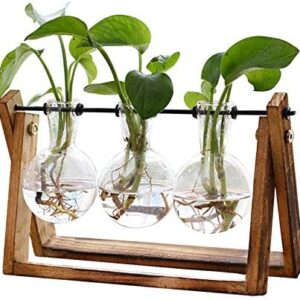In a world where natural habitats are increasingly threatened by human activities, wildlife gardens have emerged as essential sanctuaries for biodiversity conservation. These gardens offer a lifeline for countless species of plants and animals, providing them with a safe haven to thrive in the face of growing environmental pressures.
One of the primary reasons why wildlife gardens are so important for biodiversity conservation is their ability to create vital corridors for wildlife to move between fragmented habitats. As urbanization and land development continue to encroach on natural spaces, many species find themselves isolated in small pockets of greenery. Wildlife gardens act as stepping stones that allow animals to travel safely between these fragmented areas, increasing genetic diversity and promoting healthy populations.
Furthermore, wildlife gardens offer a variety of habitats that cater to different species’ needs. From nectar-rich flowers for pollinators to dense shrubs for nesting birds, these gardens provide a diverse array of resources that support a wide range of wildlife. By planting a mix of native plants, gardeners can attract a greater diversity of species, helping to restore balance to ecosystems that have been disrupted by human activities.
In addition, wildlife gardens play a crucial role in educating and inspiring people to connect with nature. By creating a space that is teeming with life, these gardens offer a tangible way for individuals to witness the beauty and complexity of the natural world. Children, in particular, can benefit greatly from interacting with wildlife in their own backyard, fostering a lifelong appreciation for the environment and a desire to protect it.
Moreover, wildlife gardens provide important ecosystem services that benefit both wildlife and humans alike. By planting native vegetation, gardeners can help to prevent soil erosion, improve water quality, and create a more resilient landscape that is better able to withstand the impacts of climate change. In addition, wildlife gardens act as natural pest controllers, attracting beneficial insects that prey on garden pests and reducing the need for harmful chemical pesticides.
It is important to note that creating a wildlife garden doesn’t have to be a daunting task. Even small spaces, such as a balcony or a tiny backyard, can be transformed into vibrant habitats that support a variety of wildlife. By choosing native plants, providing water sources, and incorporating shelter options such as birdhouses and bat boxes, gardeners can create a welcoming environment for all kinds of creatures.
In conclusion, wildlife gardens play a vital role in biodiversity conservation by providing essential habitat, fostering genetic diversity, and inspiring a love for nature in people of all ages. These gardens offer a valuable opportunity for individuals to make a positive impact on their local environment and contribute to the global effort to protect wildlife and preserve biodiversity. By creating more wildlife-friendly spaces in our communities, we can help to ensure a brighter future for all living things that call this planet home. So, why not start today and create your own wildlife garden? You’ll be amazed at the difference it can make.






